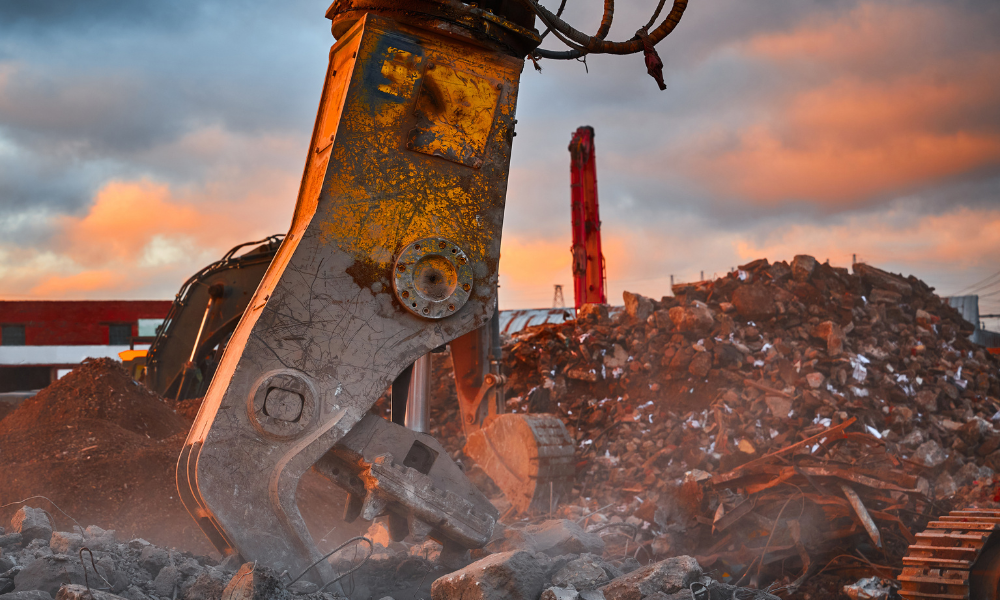What Canadians need to know about first of its kind heat standard

As North America grapples with unprecedented heatwaves, the Biden administration has unveiled a proposed rule aimed at safeguarding workers from the perils of excessive heat. This landmark measure, if finalized, promises to protect approximately 36 million U.S. workers across various sectors, including agriculture, construction, delivery, landscaping, and indoor work environments like warehouses and kitchens. The initiative marks a significant stride in workplace safety, heralding the first major federal standard of its kind to combat heat-related hazards.
A timely and necessary intervention
President Joe Biden underscored the urgency of this rule during a briefing at the DC Emergency Operations Center, stating, "what we're going to face this summer — it’s going to be significant." His remarks come as millions of Americans brace for another scorching summer, heightening the risk of heat strokes, dangerous dehydration, and heat-induced heart stress.
The proposed rule mandates that employers identify heat hazards, formulate emergency response plans, and provide comprehensive training on heat illness symptoms. Additionally, it calls for rest breaks, access to shade and water, and acclimatization protocols for new workers. Violations would incur penalties comparable to those for other Occupational Safety and Health Administration (OSHA) regulations, signaling a robust enforcement mechanism.
Industry reactions: Applause and concerns
The announcement has drawn a wave of reactions from various stakeholders. The National Safety Council (NSC) lauded the proposal, emphasizing its potential to save lives. "Death from occupational exposure to excessive heat is never acceptable," reads a statement from the NSC. "Today's proposed rule ensures all workers remain free from the hazards associated with working in extreme heat conditions."
NSC also highlighted its long-standing advocacy for such measures. "Many of the recommendations and best practices advocated by NSC are included in the proposed rule announced today by OSHA.”
Similarly, the American Society of Safety Professionals (ASSP) expressed strong support. ASSP President Pam Walaski praised the initiative while noting the need for careful analysis. "We know there are significant benefits to having work practice standards that help employers manage heat-related risks," she said. "That guidance includes training, rest breaks, access to shade and water, heat acclimatization, and emergency response plans."
Challenges and opposition
However, the proposal is not without its critics. Some industry groups argue that a one-size-fits-all mandate may be impractical across diverse work environments. Historically, heat protection laws have faced resistance, particularly from chambers of commerce and business associations. The rule's detractors caution against potential burdens on small businesses and operational disruptions.
California, Colorado, Oregon, Minnesota, and Washington already have state-specific heat exposure standards. However, these regulations have met political pushback, with recent legislative moves in Florida and Texas curbing local heat protection mandates. The new federal rule, if enacted, would override state measures, requiring all states to meet or exceed its provisions.
Implications for Canada
While this regulatory shift primarily impacts the U.S., Canadian health and safety professionals are closely monitoring its developments. Canada, with its own varying climate extremes, faces similar challenges in protecting workers from heat stress. The proposed U.S. standards could influence future Canadian policies and best practices, particularly in provinces experiencing hotter summers.
NSC emphasized the importance of collaborative efforts between industry and governments. "Providing heat awareness and lifesaving training to workers creates not only safer workplaces but also safer communities," the council stated, reinforcing the broader societal benefits of such regulations.
ASSP, which recently published the ANSI/ASSP A10.50-2024 standard addressing heat stress in construction and demolition, hopes the federal rule will align with its guidelines. "Our guidance can be adapted to protect workers performing other outdoor jobs as well," Walaski noted, expressing optimism that OSHA's proposal will harmonize with established best practices.
As the hottest months loom, the proposed rule represents a critical step toward mitigating heat-related workplace hazards. For safety professionals in both the United States and Canada, this development underscores the need for vigilant and adaptive strategies to protect workers. Whether through compliance with new regulations or the proactive adoption of best practices, the focus remains clear: ensuring the health and safety of those who toil under the sun.





